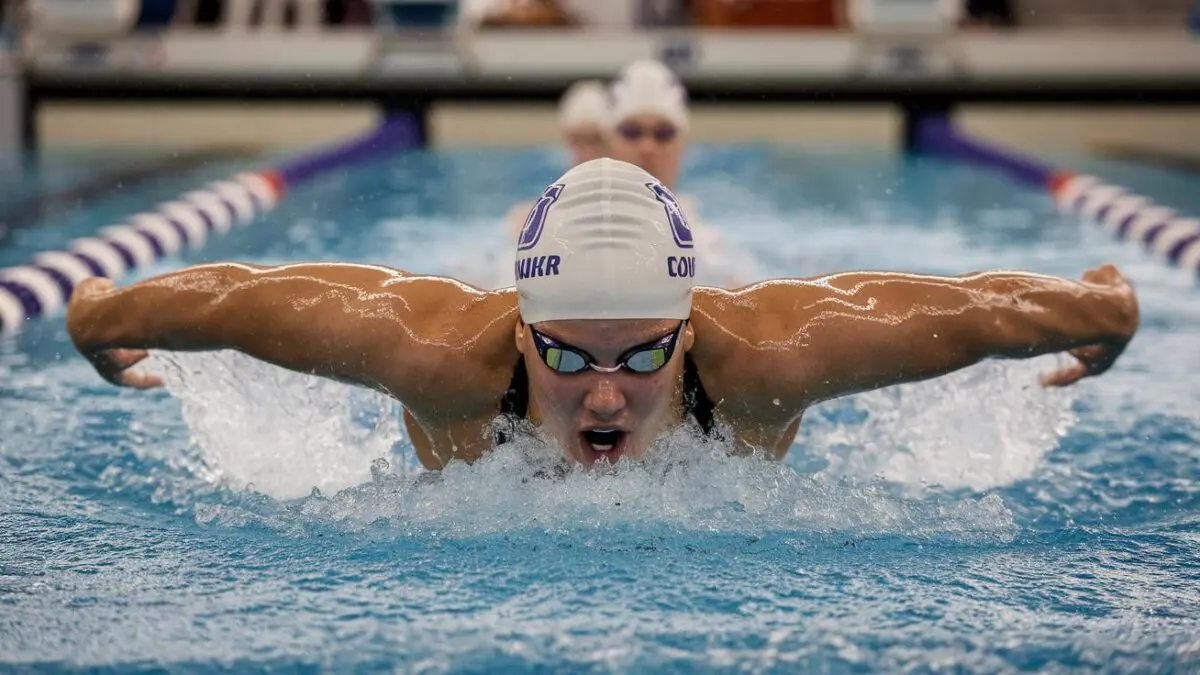The use of hand paddles by competitive swimmers has long been a staple in training regimes aimed at enhancing stroke technique and building upper body strength. However, a pivotal study has now linked the overuse of these tools to an increased risk of shoulder impingement, prompting many athletes to reconsider their training tools.
Revisiting training tools
The study, conducted over the past year, involved over 300 club swimmers across various age groups. Researchers observed that swimmers who frequently used paddles experienced a higher incidence of shoulder impingement symptoms compared to those who used them sparingly or not at all.
Shoulder impingement, a condition where shoulder muscles are pinched between the bones, leads to pain and can severely hinder performance and longevity in the sport. The findings have ignited discussions among coaches and swimmers about the necessity and frequency of paddle use in training sessions.

Immediate impact on swim clubs
Following the publication of the study, several prominent swim clubs have already begun to alter their training programs. These clubs are reducing the reliance on paddles, especially during high-intensity workouts, to decrease the risk of injury.
Coaches are now emphasizing technique and strength exercises that do not involve auxiliary equipment, focusing instead on body position and swim efficiency.
Alternative training techniques
As paddles fall out of favor, coaches are turning to other methods to build muscle and enhance stroke efficiency. Techniques such as resistance training with elastic bands and body-weight exercises are gaining popularity.
These methods not only reduce the risk of injury but are also accessible to swimmers of all levels, providing a safer approach to improving performance.
Voices from the community
Swimmers and coaches alike have expressed mixed feelings about the shift away from paddle use. While some veteran swimmers find it hard to let go of a long-time training aid, newer athletes appreciate the reduced risk of injury and the focus on natural strength building.
Many coaches have advocated for a balanced approach, suggesting that paddles can still be beneficial if used correctly and sparingly.

What this means for future training
The shift in training methods could potentially reshape the landscape of competitive swimming. With an emphasis on sustainability and injury prevention, the sport might see enhancements in athlete longevity and performance.
It also sets a precedent for how other sports might reconsider the role of training equipment in athlete development and injury prevention.
Guidelines for safe paddle use
For those who choose to continue using paddles, experts recommend adhering to specific guidelines to mitigate the risk of shoulder impingement.
- Limit paddle use to specific drills that focus on stroke correction.
- Ensure paddles are the correct size — too large can increase strain on the shoulders.
- Incorporate plenty of exercises that strengthen the shoulder’s rotator cuff and scapular muscles.
These precautions can help maintain the benefits of paddle training while minimizing the risk of injury.
This recent study and the subsequent shift in training practices underscore a growing awareness in the swimming community about the importance of injury prevention and the need to adapt practices to ensure athlete health and career longevity. As the debate continues, it will be interesting to observe how training methodologies evolve in response to new insights.



